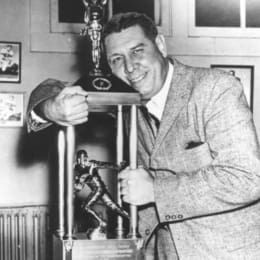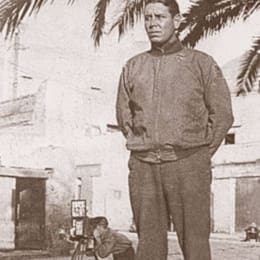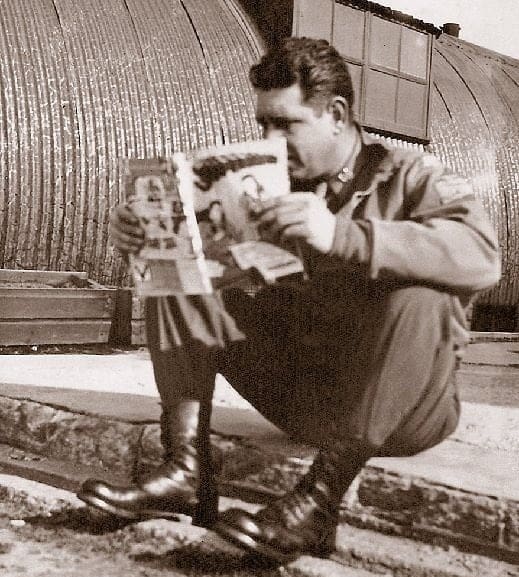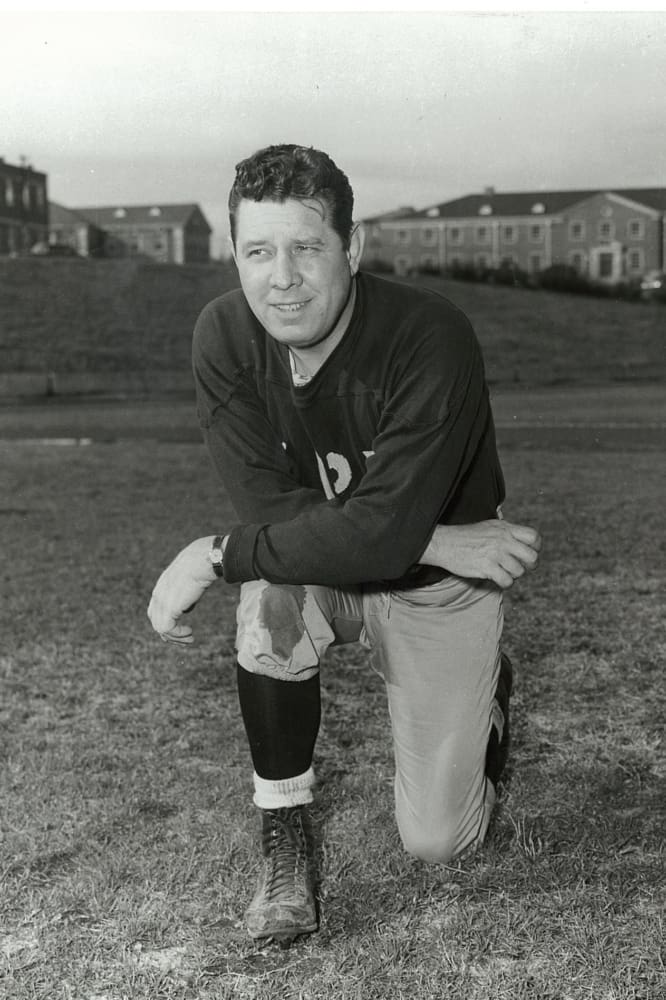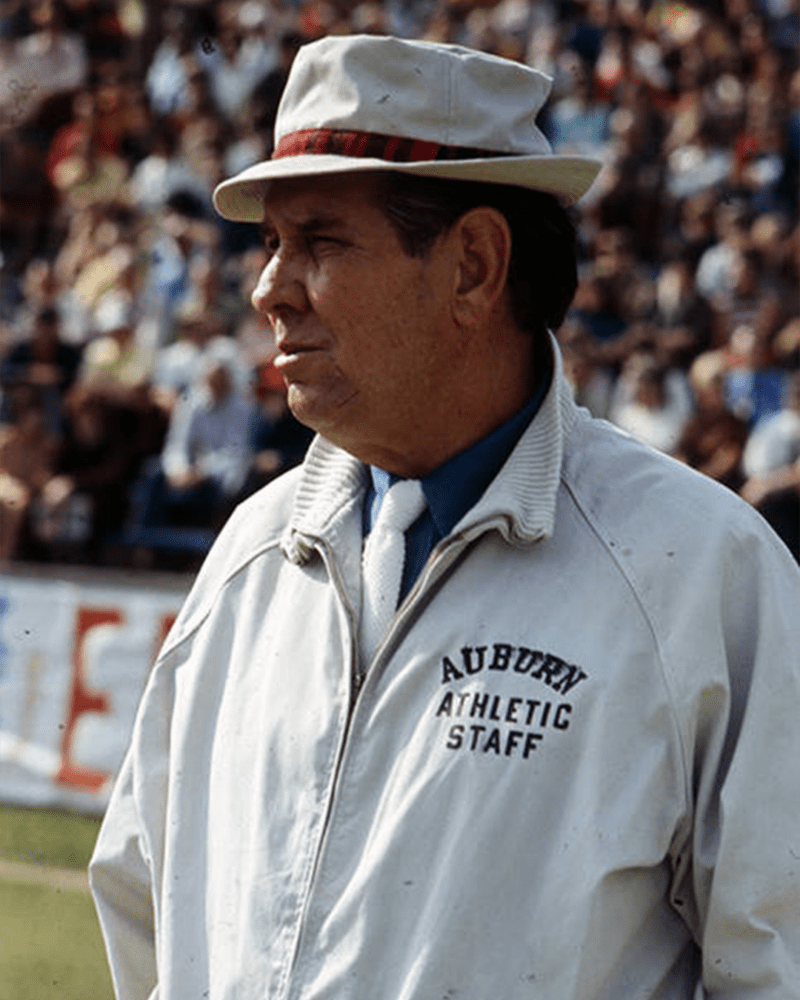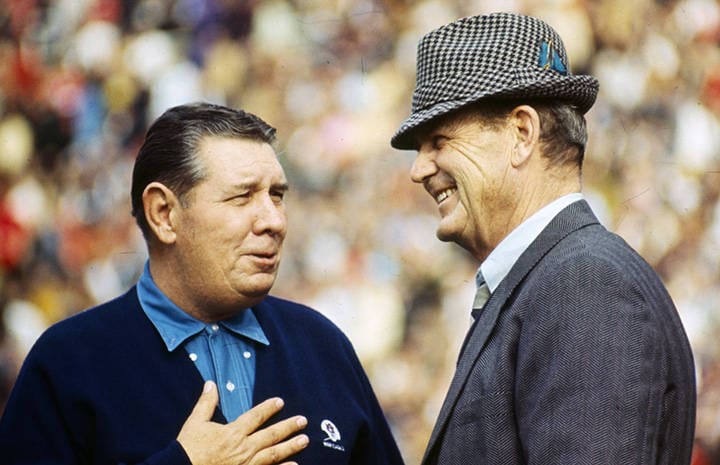Ralph “Shug” Jordan
Born: September 25, 1910
Birthplace: Selma, Alabama
Death Date: July 17, 1980
Death Place: Auburn, Alabama
Time at Auburn: 1928-1932, 1934-1942, 1945-1946, 1951-1975
Graduation Date: 1932
Degree: Bachelor’s of Science in Education
College Football Hall of Fame
James Ralph Jordan was born in Selma, Alabama. During his elementary school years, the family lived near Grove Hill but would return to Selma for Jordan’s time in high school.
It was in Jordan’s childhood that he earned the nickname “Shug” (originally spelled “Sug”) as he was was often seen chewing on sugar cane. In high school, Jordan earned a new nickname, “Lefty,” due to being left-handed. That nickname would follow Jordan throughout his playing career.
Jordan graduated from from Parrish High School in Selma in 1928 and went on to attend Alabama Polytechnic Institute in Auburn. There, he would excel in three sports: football, basketball, and baseball. Jordan would play center for the football team, pitcher for baseball, and be a top scorer and strong defenseman for the “cagers” team. He was named Auburn’s Most Outstanding Athlete in 1932, his senior year.
After graduating in 1932, Chet Wynne, the head coach of the football program, hired Jordan to coach the freshman team and be an assistant with the varsity squad. He would also serve as the basketball head coach during this time.
Following the US’s entry into World War II, Jordan joined the Army Corps of Engineers as a lieutenant. He would see action in North Africa, Sicily, Italy, France, and, most importantly, storm the beaches of Normandy on June 6, 1944.
Jordan was one of the few people to know about the D-Day invasion plans as he assisted in planning many of the amphibious landings. As the Allied soldiers approached the coastline, Jordan had a clipping of the January 1, 1944 The Plainsman tucked into his boot. It was the first printing of George Petrie’s “Auburn Creed.” Petrie, a history professor, was one of Jordan’s mentors at Auburn.
Upon landing on the beach, Jordan took shrapnel to his left arm and shoulder. His fellow soldiers would find him sitting behind a large rock on the beach. Jordan told the men to continue the fight and leave him be. He would eventually make his way to treatment and be awarded a Purple Heart.
After the war, Jordan and many other coaches returned to Auburn, expecting to find their positions open as promised. Auburn, instead, filled the vacancies and Jordan was forced to find work elsewhere. He would work with the Miami Seahawks, a professional All-America Football Conference team, in 1946 before moving to Georgia as basketball head coach and football assistant coach.
In 1951, after Auburn fired Earl Brown following a winless 0-10 season, Jordan interviewed for the Auburn coaching position. Jeff Beard, Auburn’s new athletic director who took over the position about a month prior, was the driving force behind getting Jordan back to the Plains. The two were also friends, having been Auburn student-athletes at the same time.
Jordan took over a depleted program and immediately made the right changes. Six years into the job, the Tigers took home their first national championship in 1957 and a record 24-game streak without a loss would stretch to the 1959 opener. Jordan coached legendary players like Lloyd Nix, Pat Sullivan, Terry Beasley, Zeke Smith, Ed Dyas, Tucker Frederickson, Jimmy Sidle, and many more.
In 1973, Auburn renamed Cliff Hare Stadium after Jordan. He would be the first active coach in America to have a stadium named after him.
Jordan retired following the 1975 season. Having completed 25 years as coach, a good milestone number to leave on, Jordan called it quits. He would stay in Auburn as a Board of Trustees member and serve the University in many capacities.
In April 1980, Jordan was diagnosed with leukemia. He would die just three months later at his Auburn home.
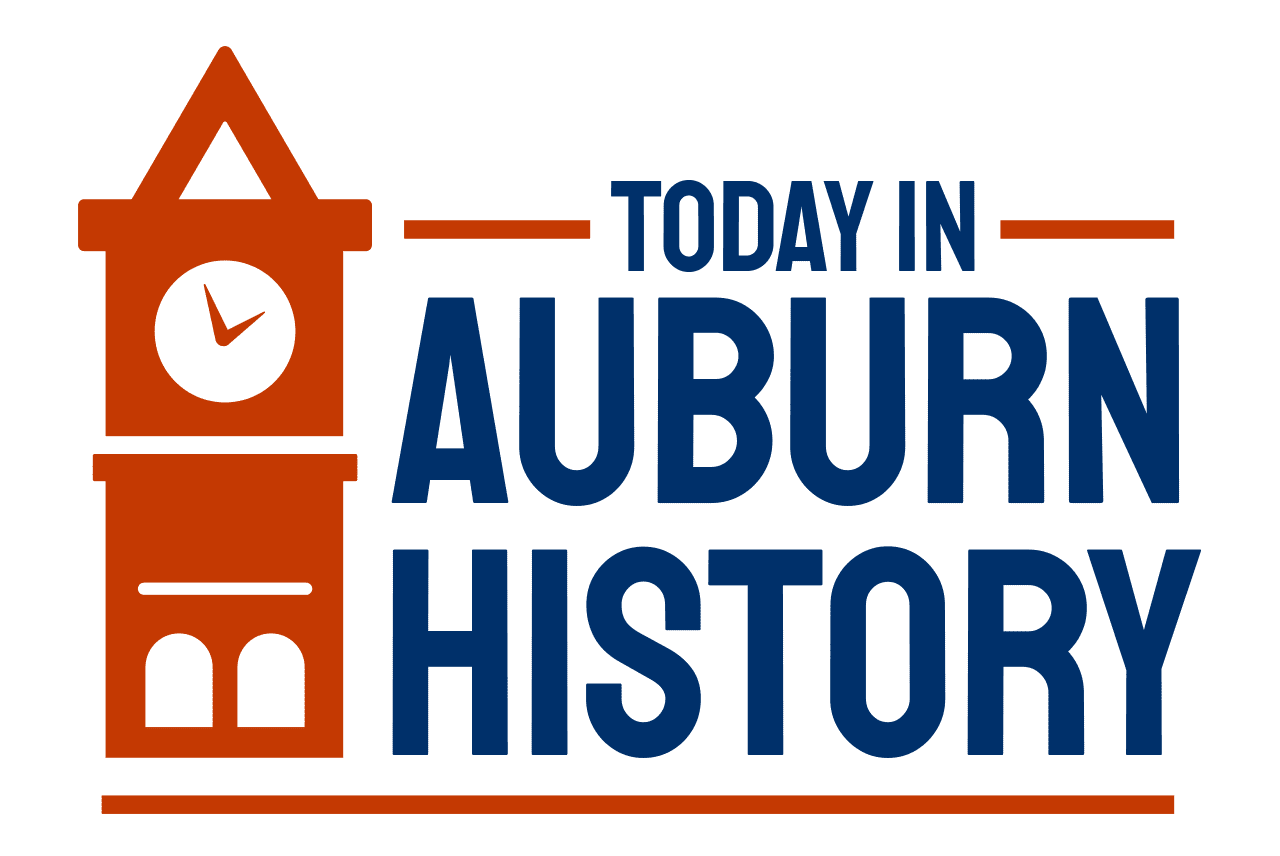
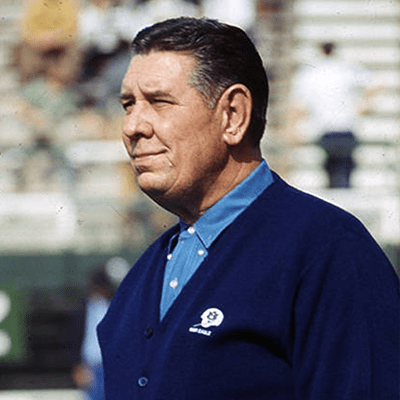
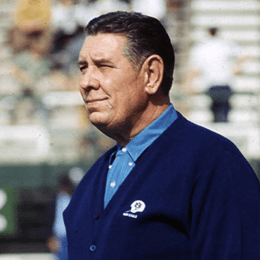 Alabama Department of Archives & History
Alabama Department of Archives & History
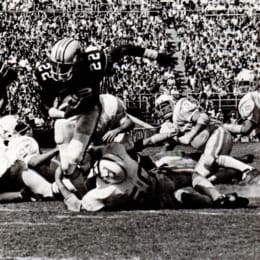 Auburn Glomerata
Auburn Glomerata Auburn Glomerata
Auburn Glomerata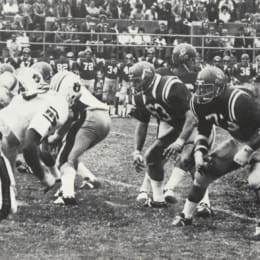 Auburn Glomerata
Auburn Glomerata Auburn Glomerata
Auburn Glomerata